Презентация W9.1 Chapter 9 Group Behavior

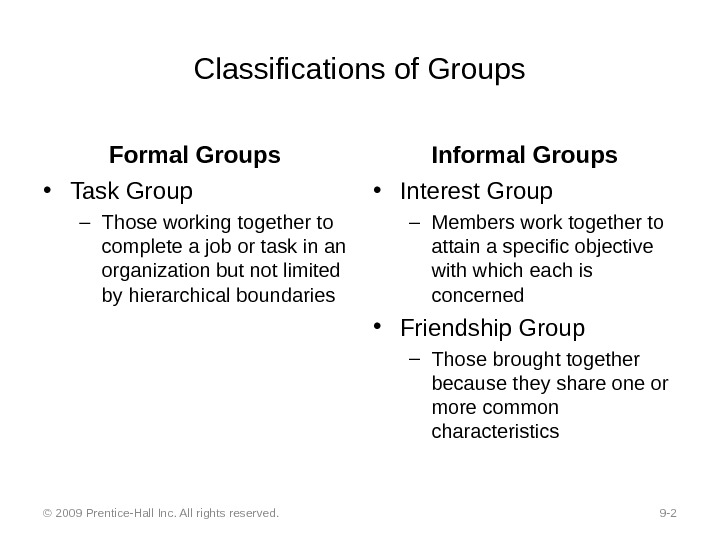




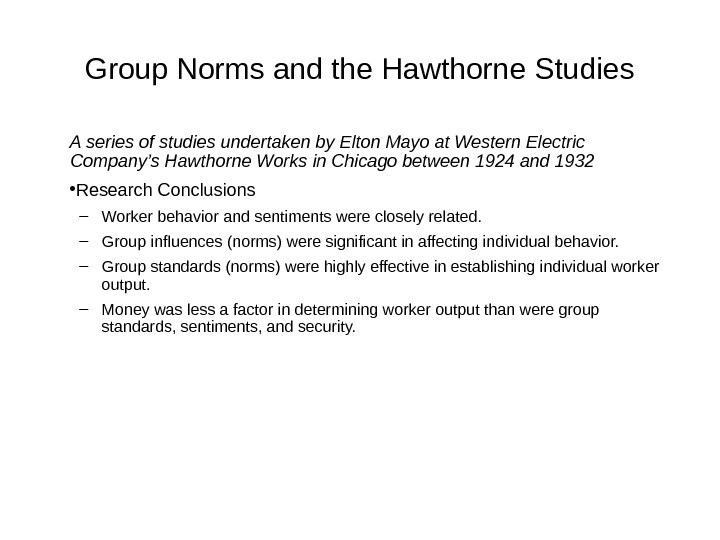
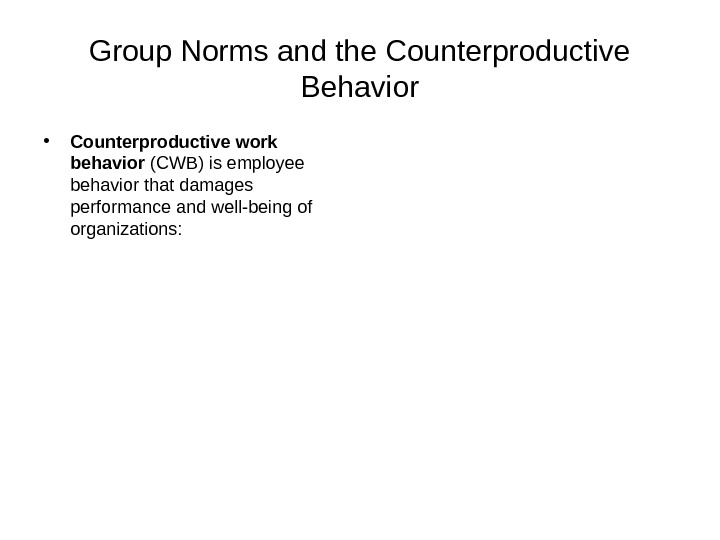
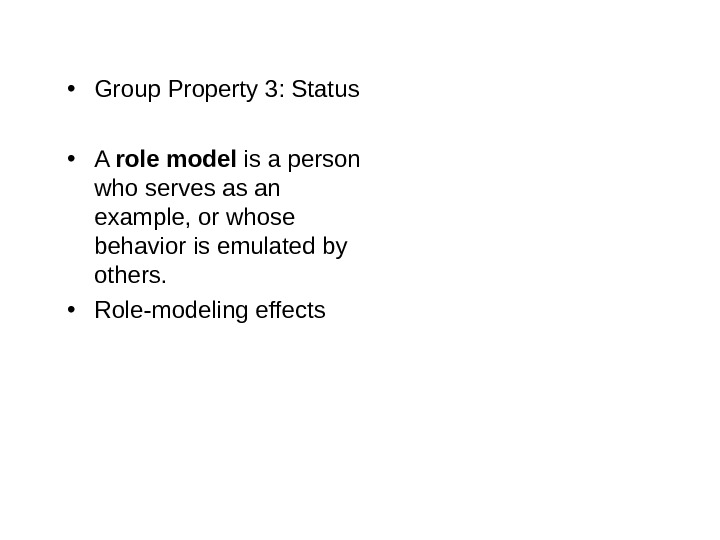
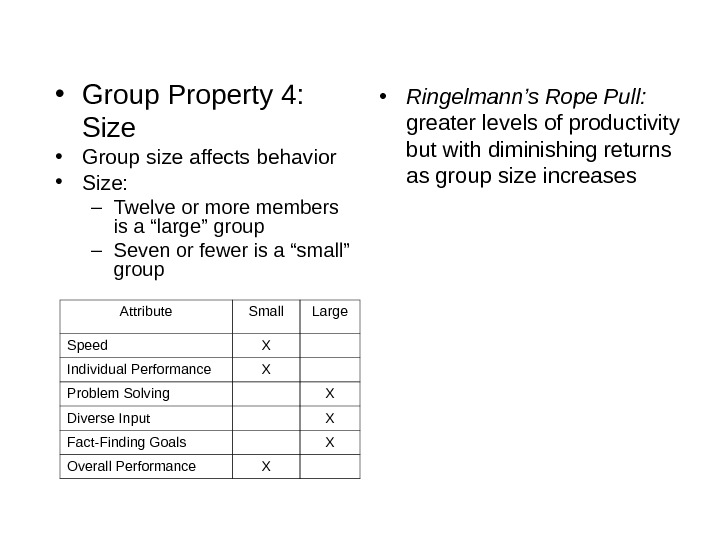


- Размер: 199 Кб
- Количество слайдов: 12
Описание презентации Презентация W9.1 Chapter 9 Group Behavior по слайдам
 W 9. 1 Chapter 9 Foundations of Group Behavior
W 9. 1 Chapter 9 Foundations of Group Behavior
 Classifications of Groups Formal Groups • Task Group – Those working together to complete a job or task in an organization but not limited by hierarchical boundaries Informal Groups • Interest Group – Members work together to attain a specific objective with which each is concerned • Friendship Group – Those brought together because they share one or more common characteristics © 2009 Prentice-Hall Inc. All rights reserved. 9 —
Classifications of Groups Formal Groups • Task Group – Those working together to complete a job or task in an organization but not limited by hierarchical boundaries Informal Groups • Interest Group – Members work together to attain a specific objective with which each is concerned • Friendship Group – Those brought together because they share one or more common characteristics © 2009 Prentice-Hall Inc. All rights reserved. 9 —
 Five Stages of Group Development 1. Forming – Members feel much uncertainty 2. Storming – Lots of conflict between members of the group 3. Norming Stage – Members have developed close relationships and cohesiveness 4. Performing Stage – The group is finally functional 5. Adjourning Stage – In temporary groups, characterized by concern with wrapping up activities rather than performance storming norming performing adjourning
Five Stages of Group Development 1. Forming – Members feel much uncertainty 2. Storming – Lots of conflict between members of the group 3. Norming Stage – Members have developed close relationships and cohesiveness 4. Performing Stage – The group is finally functional 5. Adjourning Stage – In temporary groups, characterized by concern with wrapping up activities rather than performance storming norming performing adjourning
 An Alternative Model for Group Formation Temporary groups with deadlines • Punctuated-Equilibrium Model – Temporary groups under deadlines go through transitions between inertia and activity—at the halfway point, they experience an increase in productivity. – Sequence of Actions 1. Setting group direction 2. First phase of inertia 3. Halfway point transition 4. Major changes 5. Second phase of inertia 6. Accelerated activity A BFirst Meeting (A+B)/2 time. Phase 1 Phase
An Alternative Model for Group Formation Temporary groups with deadlines • Punctuated-Equilibrium Model – Temporary groups under deadlines go through transitions between inertia and activity—at the halfway point, they experience an increase in productivity. – Sequence of Actions 1. Setting group direction 2. First phase of inertia 3. Halfway point transition 4. Major changes 5. Second phase of inertia 6. Accelerated activity A BFirst Meeting (A+B)/2 time. Phase 1 Phase
 Group Properties Group Performance: – Roles – Norms – Status – Size – Cohesiveness
Group Properties Group Performance: – Roles – Norms – Status – Size – Cohesiveness
 • Group Property 1: Roles • Role Identity • Role Perception • Role Expectations • Role Conflict • Group property 2: Norms • Norms – Acceptable standards of behavior within a group that are shared by the group’s members • Classes of Norms – Performance norms – Appearance norms – Social arrangement norms – Allocation of resources norms
• Group Property 1: Roles • Role Identity • Role Perception • Role Expectations • Role Conflict • Group property 2: Norms • Norms – Acceptable standards of behavior within a group that are shared by the group’s members • Classes of Norms – Performance norms – Appearance norms – Social arrangement norms – Allocation of resources norms
 Group Norms and the Hawthorne Studies A series of studies undertaken by Elton Mayo at Western Electric Company’s Hawthorne Works in Chicago between 1924 and 1932 • Research Conclusions – Worker behavior and sentiments were closely related. – Group influences (norms) were significant in affecting individual behavior. – Group standards (norms) were highly effective in establishing individual worker output. – Money was less a factor in determining worker output than were group standards, sentiments, and security.
Group Norms and the Hawthorne Studies A series of studies undertaken by Elton Mayo at Western Electric Company’s Hawthorne Works in Chicago between 1924 and 1932 • Research Conclusions – Worker behavior and sentiments were closely related. – Group influences (norms) were significant in affecting individual behavior. – Group standards (norms) were highly effective in establishing individual worker output. – Money was less a factor in determining worker output than were group standards, sentiments, and security.
 Group Norms and the Counterproductive Behavior • Counterproductive work behavior (CWB) is employee behavior that damages performance and well-being of organizations:
Group Norms and the Counterproductive Behavior • Counterproductive work behavior (CWB) is employee behavior that damages performance and well-being of organizations:
 • Group Property 3: Status • A role model is a person who serves as an example, or whose behavior is emulated by others. • Role-modeling effects
• Group Property 3: Status • A role model is a person who serves as an example, or whose behavior is emulated by others. • Role-modeling effects
 • Ringelmann’s Rope Pull: greater levels of productivity but with diminishing returns as group size increases • Group Property 4: Size • Group size affects behavior • Size: – Twelve or more members is a “large” group – Seven or fewer is a “small” group Attribute Small Large Speed X Individual Performance X Problem Solving X Diverse Input X Fact-Finding Goals X Overall Performance X
• Ringelmann’s Rope Pull: greater levels of productivity but with diminishing returns as group size increases • Group Property 4: Size • Group size affects behavior • Size: – Twelve or more members is a “large” group – Seven or fewer is a “small” group Attribute Small Large Speed X Individual Performance X Problem Solving X Diverse Input X Fact-Finding Goals X Overall Performance X
 Group Property 5: Cohesiveness • Degree to which group members are attracted to each other and are motivated to stay in the group – To increase cohesiveness: – Make the group smaller. – Encourage agreement with group goals. – Increase time members spend together. – Increase group status and admission difficulty. – Stimulate competition with other groups. – Give rewards to the group, not to individuals. High productivity Moderate productivity Low productivity Moderate to low productivity. Cohesiveness High Low High Lowperformance
Group Property 5: Cohesiveness • Degree to which group members are attracted to each other and are motivated to stay in the group – To increase cohesiveness: – Make the group smaller. – Encourage agreement with group goals. – Increase time members spend together. – Increase group status and admission difficulty. – Stimulate competition with other groups. – Give rewards to the group, not to individuals. High productivity Moderate productivity Low productivity Moderate to low productivity. Cohesiveness High Low High Lowperformance

